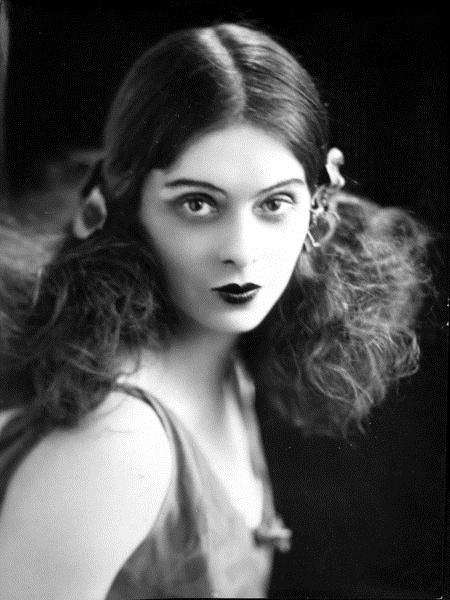Spotlight Saturday: Ninette de Valois
- Selene
- Apr 7, 2018
- 5 min read
This week's Spotlight Saturday features the 'godmother of ballet', Ninette de Valois, who founded The Royal Ballet.

Dame Ninette de Valois taking a rehearsal
Ninette de Valois was born Edris Stannus on June 6 1898, in County Wicklow, Ireland. She spent her childhood there, in a country house called Baltiboys, and always insisted that she was 'of Ireland'. The family moved to London when she was 11, where de Valois took classes in 'fancy dancing' from the fashionable Mrs. Wordsworth before moving to the Lila Field Academy for more restrained instruction. Barely 14, she went on tour with the 'Wonder Children' of the academy, and performed the Dying Swan routine (which she had learned after seeing Anna Pavlova dance it) on, she claimed, 'every pier in England.'

Ninette de Valois, aged 16, 1914
For more serious professional training, she turned to Edouard Espinosa. She became the principal dancer for pantomimes at the Lyceum and opera ballets at Covent Garden. When Diaghilev's Ballets Russes came to London, she took classes with the dancers under the formidable old Maestro, Cecchetti, and befriended the company's stars, Lydia Lopokova and Leonide Massine.

As Swanhilda in 'Coppelia'
The beginnings of attempts to create a national British ballet company were already in the air. De Valois, never a fool, realised that the only way to learn to how create and run a company were to be in one, and naturally she joined the best that could be found: Diaghilev's Ballets Russes. As a member of the corps de ballet, de Valois performed with Diaghilev's troupe from 1923 to 1925, and briefly returned in 1926. She danced the most cutting edge choreography in ballets by Massine and Nijinska, she learnt as much as she could about company procedure and choreography, and from her now regular classes with Maestro Cecchetti and another Russian legend, Nikolai Legat, she learned classic, Russian, academic dance.

c. 1925
In 1926, de Valois opened her own school, the Academy of Choreographic Art. The same year, she had her now famous interview with Lilian Baylis of the Old Vic Theatre; Baylis offered an extra incentive to the deal - she was planning to rebuild the Sadler's Wells Theatre, which would have enough room for a small ballet company. In 1929, while de Valois was waiting for the reopening of Sadler's Wells and slowly but steadily building up a small repertoire of her own choreographer, news came that Sergei Diaghilev, impresario of the Ballets Russes, had died. His dancers now scattered themselves all over the world, and a few came to London. There was a current of impatient feeling for a national company that could not wait for the Sadler's Wells to be finished, and so The Camargo Society was born in 1930. Using mostly British talent, the Society commissioned three or four ballets a year until 1933; de Valois, with fellow choreographer Marie Rambert, was deeply involved in the effort, as was de Valois' old friend from the Diaghilev days, Lydia Lopokova.

With Anton Dolin after a performance of 'Job'
In 1933, the repertoire of The Camargo Society was incorporated into the Vic-Wells Ballet when the Sadler's Wells Theatre was finally ready. Right from the beginning, de Valois had a run of luck: she secured not only Constant Lambert as musical director, but the stars Alicia Markova and Anton Dolin as guest artists. It was Markova, Diaghilev's original baby ballerina, and Dolin, one of his foremost principal dancers, who secured the future of the fledgling company, in their performances of Giselle and Job respectively. In 1935, however, Markova left, and de Valois turned to a most unlikely candidate to replace her: the teenage Margot Fonteyn. Not even de Valois could have known how well her gamble would turn out: Fonteyn became Britain's beloved prima ballerina.

The Royal Ballet's star, Margot Fonteyn, owed her career's beginnings to de Valois
One by one, de Valois added the great classics to the repertoire, and began to supplement them with her own distinctly British choreography. Three of her works have survived to the present company: Job, The Rake's Progress, and Checkmate. In 1935, Frederick Ashton joined the company as chief choreographer, and de Valois was happy to leave the choreography to him. But 'Madam', as she was known, was devoted to her company.

Margot Fonteyn, Ninette de Valois, American choreographer George Balanchine, and Beryl Grey, Covent Garden, 1950
In the years leading up to World War II, there was bitter rivalry in the dance world between the two possible successors to the Ballets Russes: Colonel de Basil's Ballet Russes de Monte Carlo, and Massine's Original Ballets Russes, both of which came periodically to London with the repertoire inherited from the original company, and consequently dwarfing de Valois' small troupe. But these companies, with no Diaghilev to bind them and no proper home, were more or less scattered by the outbreak of war. The Sadler's Wells company, too, was almost defeated; they lived the war years through with no permanent theatre and while on tour in Holland were almost caught by the German invasion. But they carried on. A temporary residence was found at what is now Albery Theatre; the challenges made by the departure of many of their male dancers to the armed forces (including choreographer Frederick Ashton) somehow overcome; and nationwide tours became a necessity. They danced at army bases; they danced with no accompaniment but a piano, or only by candlelight; but they danced. The Sadler's Wells never missed a performance, and Britain loved them for it.

de Valois takes a class (in a pencil skirt!)
In 1946, they were offered a tremendous honour: to re-open The Royal Opera House at Covent Garden. The offer implied recognition of national status, and the company accepted, stepping out on opening night in de Valois' sumptuous new production of The Sleeping Beauty, in which Margot Fonteyn starred as Aurora. Their first visit to the United States in 1949 was a risk, and once again it paid off. In 1956, the company was given a royal charter, making it The Royal Ballet, an honour which extended to its school, now The Royal Ballet School. The Royal Ballet had taken its place in the international dance world as a setter of standards and a source of talented dancers and choreographers. This reputation was cemented by the success of their tour to Russia, the home of classical ballet, in 1961. Meanwhile, The Royal Ballet School had become a full-time education provider, and when Madam retired from the company in 1963, she turned her energies instead to the school.

de Valois and Margot Fonteyn, 1990
She was made a Dame of the British Empire in 1957, a Companion of Honour in 1982, and was awarded the ultimate, the Order of Merit, in 1992, as well as receiving that same year the special award for lifetime achievement from the Society of West End Theatres. These, and other additional awards, she accepted not so much for herself as for 'the company'. In 1996, she was furthered honoured; at the 50th anniversary celebrations of the reopening of Covent Garden, at which de Valois' production of The Sleeping Beauty was once again performed, she had come on stage to a standing ovation started by the Queen in the Royal Box. De Valois spent her 100th birthday at the Royal Ballet School at White Lodge, surrounded by another generation of the students and the dancers she loved. It was a beautiful day, and Dame Ninette (or Ninny as her old friend Lydia always insisted on calling her) turned to an old colleague and said, 'I don't see how anything up there can be as beautiful as this.'

de Valois visits a class at White Lodge
Dame Ninette de Valois died aged 102 on March 8 2001.

The statue of Ninette de Valois by sculptor Enzo Plazzotta outside the Royal Opera House in Covent Garden
Thanks for reading!
- Selene
































Comments